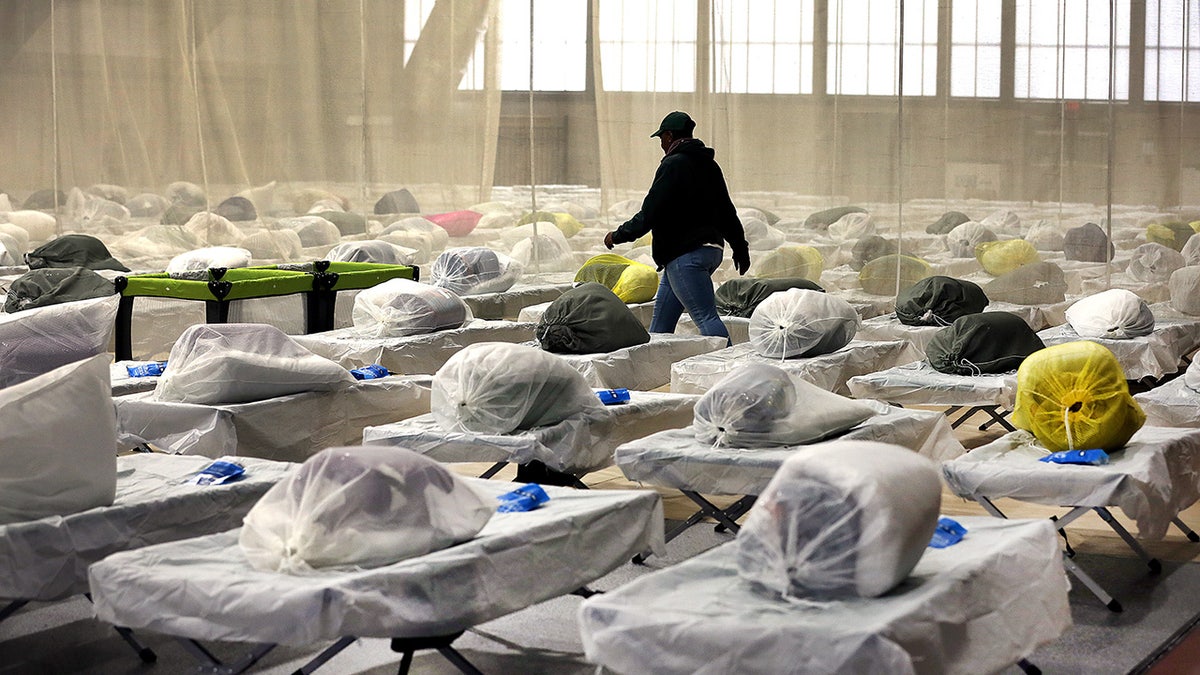A new report analyzed the impact the migrant crisis will have on Massachusetts residents with the state projecting to spend $1.8 billion over the next two years, making it a potential “fiscal time bomb.”
The Center for Immigration Studies (CIS) released a report on July 24, which predicted The Bay State will struggle to manage the growing number of migrants coming to the state.
“The cost to Massachusetts taxpayers of temporary housing and shelters is enormous, but it pales in comparison to the costs that will accumulate in the future if those in the temporary shelters today remain in the Commonwealth for the long term,” CIS director of policy studies Jessica Vaughan wrote.
In addition to housing, some other costs taxpayers will have to cover include schooling, social services, medical care, and public safety.
MASSACHUSETTS CLOSES COMMUNITY CENTER TO PUBLIC TO SHELTER MIGRANTS, PROMPTING BACKLASH
These migrants are eligible for certain welfare programs in Massachusetts like food stamps provided by the Supplemental Nutrition Assistance Program (SNAP), Temporary Assistance to Needy Families (TANF), Medicaid, and other public services. Migrants can access these programs even while the federal government prohibits access to such programs.
The report said the state has already spent more than $1 billion on the Emergency Assistance (EA) sheltering program that houses migrants.

According to the report, some of the migrants housed by the Emergency Assistance program “arrived under one of the Biden administration’s controversial parole programs.”
“And some who State budget officials expect they will have to spend another $1.8 billion in the next two years,” the report added.
In order to manage the growing number of migrants, Gov. Maura Healey, D., had to place restrictions on shelter programs to prioritize state residents.
MIGRANTS CONTINUE TO STREAM INTO BOSTON AIRPORT AS MORE THAN 100 SLEEP ON THE FLOOR
The report estimates that the number of “illegal and inadmissible” migrants living in Massachusetts is about 355,000 with 50,000 new arrivals since 2021. It also reported that 10,000 migrants were minors with 8,500 being unaccompanied.
While migrants tend to have high labor force participation rates, the new arrivals face a language barrier. The report states that new arrivals “lack the education or skills needed for an individual or family to be self-sufficient in Massachusetts.”
A separate report by MassInc and UMass Donahue found that over 450,000 Massachusetts residents have limited English-language proficiency. This makes up approximately 10% of the state’s workforce. The data could be an undercount, considering that it stems from 2022 Census estimates.

Healey announced last month that she had sent members of her administration to the Texas border, citing “record” numbers of migrants coming to Boston.
Officials will make connections with federal agencies, non-governmental organizations (NGOs) and migrant families “to educate them about the lack of shelter availability in Massachusetts.”
Healey’s office did not immediately respond to a request for comment about the CIS study.
Read the full article here











